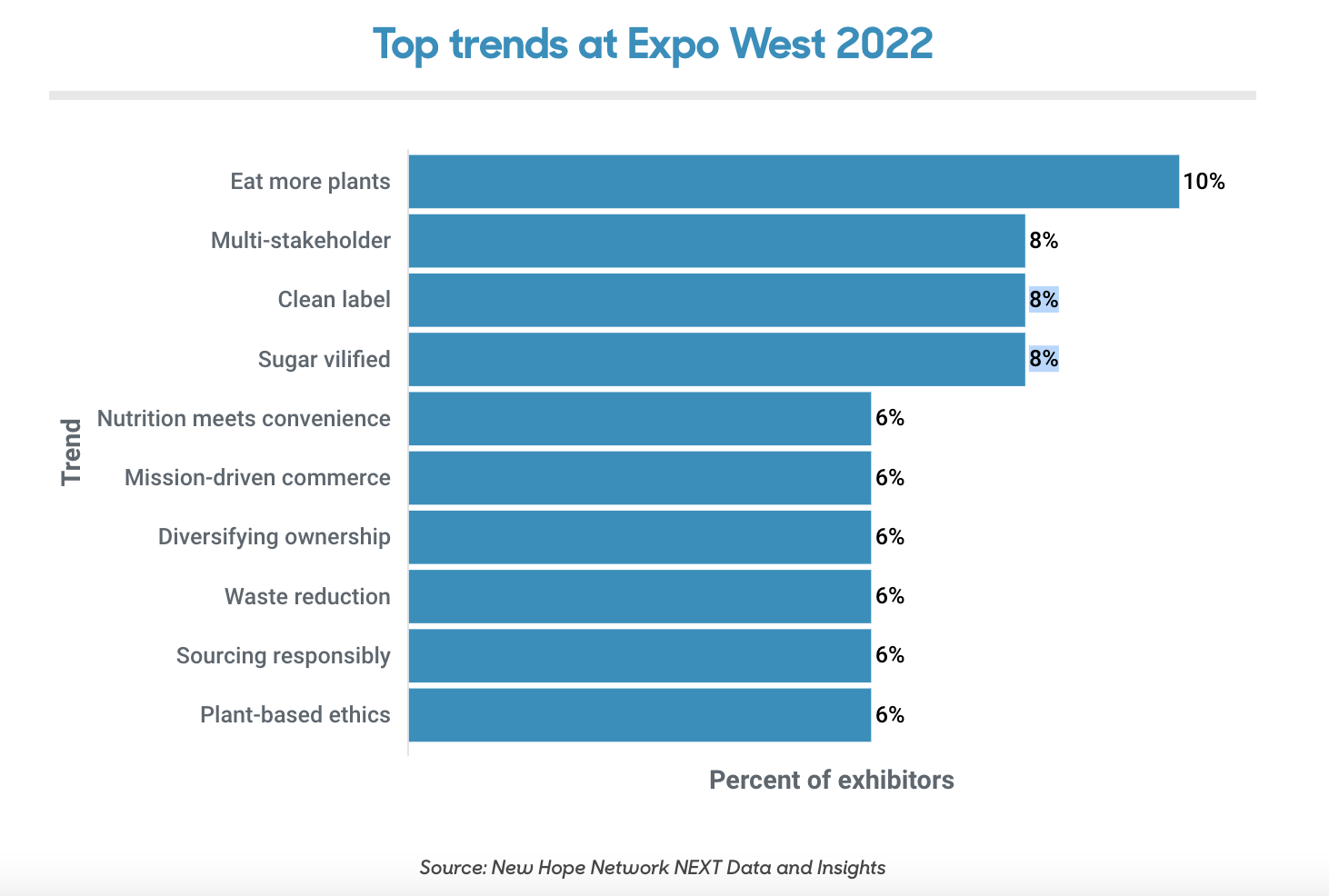Innovation wasn’t stalled by the pandemic and the industry is sticking to fundamental values
When the natural products community gathers in Anaheim in March for the first in-person Natural Products Expo West in three years, the first minutes will be a rush of the familiar and the new through post-pandemic eyes.
And then the eyes and minds will turn directly to trends.
Much of public life was placed on hold in the last two years, but innovation barely took a breather and a first look at what’s coming to the expo floor reminds us that the natural products industry has kept its focus on foundational values. New Hope Network’s analysis of products exhibitors will be showing, which evaluates innovation and product promise on a scale that may exclude window-dressing claims, tells us core principals weren’t changed by the pandemic.
However, we do see significant growth in diversifying ownership, which might suggest that there is still room for shoring up the foundational values. Similarly, multi-stakeholder callouts are up from 2019. At the other end of the change spectrum, “plant-based” looks more and more like a mature category in terms of true innovation.
Regardless of shifts, however, the trends at Natural Products Expo West 2022 show us that the natural products did not lose its focus during the pandemic. When you walk the aisles, look for these trends as a reminder of the industry’s core values:
Eat more plants
The goal here is to incorporate more nutrient-dense plants in the diet. Brands are creatively catering to picky children avoiding spinach and broccoli, adventurous adults seeking the latest exotic plant superstar, and consumers seeking meat and dairy alternatives.
Multi-stakeholder
These are brands that are setting goals that go beyond profit margins to reduce negative impact on people, animals and the plane. The companies may not have been formed to address poverty, hunger or environmental problems but those targets have been written into the business plan.
Nutrition meets convenience
These are products that aren’t just easy to prepare or consume; they also include a nutritional benefit that goes beyond organic. That can take the form of functional foods, “foodified” supplements and layering medicinal herbs and mushrooms into snacks and other quick-eats products.
Sourcing responsibly
More brands want to be able to tell their consumers that they are delivering higher quality ingredients with lower impact sourcing. Telling that story requires transparency and innovation.
Waste reduction
Brands want to be able to show consumers that they are not only reducing food waste and eliminating unnecessary packaging; they are also “upcycling” ingredients that used to end up in the waste stream.
Diversifying ownership
The faces behind the majority shareholder in a brand is shifting. Whether it be through types of employee-owned models, or new enterprises with BIPOC, Latinx, or Asian-American founders, entrepreneurs are diversifying what ownership looks like.
Clean label
Simplification is a means to rebuilding trust. Brands are stripping out unpopular ingredients, creating simple ingredient lists and addressing all the cleanup efforts behind their products.
Mission-driven commerce
Brands in this space are represented by radical change-makers doing the hard work to create a product or brand with a focused goal to improve how commerce is conducted by addressing social or environmental issues.
Plant-based ethics
The ugly side-effects of the livestock industry are drivers for consumers opting for more plants as they either reduce or avoid animal-based foods entirely.
